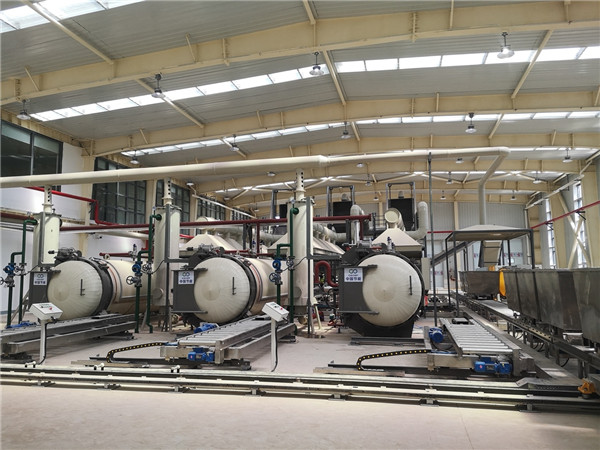Has your country been shortlisted for the 5th Guangzhou Award?
The 2021 Global Mayors' Forum Serial Events were held from Nov 8 to 13 in Guangzhou, and included the 2021 Global Mayors' Forum, the 13th World Congress of the World Association of Metropolis and the 5th Guangzhou International Award for Urban Innovation (Guangzhou Award).
Established in 2012, the Guangzhou Award has been successfully held five times. The fifth Guangzhou Award has received 273 submissions from 175 cities in 60 countries and regions. The judges have selected a series of shortlisted countries for this year's event.
Do you want to know more about the initiatives from the cities that have been shortlisted? We will introduce each of them in detail below.
How can cities be more child- and youth-friendly? Take a look at Vienna, Austria's initiative.
Over the past 50 years, Vienna has shifted from a shrinking and aging city into a young and growing one. The city adopted the project Werkstadt Junges Wien (Vienna Children and Youth Program) that organizes more than 1,300 participatory activities, enabling children and young people of all age groups and backgrounds to freely articulate their own ideas and suggestions for the city.
The initiative is aiming for a more structural, long-term and large-scale approach, and the objective is to socially include all children and young people living and growing up in Vienna into the heart of policymaking and the city administration.
To date, the impressive result indicates that 193 specific measures and actions are currently underway citywide. The strategy has been adopted by the Vienna City Council, which makes it a binding commitment.
How does São José Dos Pinhais, Brazil contain Yellow Fever? Regular citizens have become public health scouts.
São José Dos Pinhais has seen a surge in the number of Yellow Fever cases in recent years. To prevent outbreaks, the municipality has designed a public health campaign that's anchored to a mobile application and designed by the Brazilian government organization SISS-Geo.
SISS-Geo allows anybody with a mobile phone to register and geocode any sighting of dead animals or potentially contaminated areas with the municipal health department. The app transforms regular citizens into public health scouts, which help public health departments expand their capacity to scan and scope environmental conditions.
The campaign has proven that the use of the SISS-Geo Platform for monitoring non-human primates' health in real time can not only give public health officials up to two months advance notice of an outbreak, but also provide enough time to inoculate thousands of people. However, more time is needed to develop animal protection initiatives that help protect wildlife.
How to deal with urban medical waste disposal in emergencies during COVID-19? Chongqing, China innovatively adopted the Three-Level Emergency Mechanism.
The city implemented an emergency solution that combines novel technology to deal with urban medical waste disposal with strict supervision of hospitals in Chongqing to ensure effective regulation of medical waste, thus preventing secondary infections and control of the virus.
Meanwhile, Chongqing Zhide Thermal Power Industry provided complete sets of equipment and technology to Wuhan. It helped the China Energy Conservation and Environmental Protection Group to construct an emergency disposal center for medical wastes of COVID-19 to process medical wastes.
This initiative provides a good model for the emergency disposal of medical waste to safely keep urban areas resilient during the pandemic and also demonstrates to the world the importance of medical waste disposal to control the spread of diseases.

How can bicycles be used to ease traffic congestion? The Capital Region of Denmark builds cycle superhighways.
A total of 30 municipalities in the Capital Region of Denmark have joined forces to create cycle superhighways, which are regional networks with a cycling infrastructure that gives long distance commuters the opportunity to commute by bicycle across municipal borders on cohesive and correlating routes.
The purpose of this initiative is to make more than 850 kilometer of cycle superhighways in the region to help decrease congestion, improve people's health and reduce the cities and municipalities in the region from producing large amounts of CO2 and NOx. Nine routes with a total distance of 174 km have been implemented so far.
Benefits from this new initiative have already been proven to be effective. On the cycle superhighways there has been a 23 percent average increase in the number of new cyclists and 14 percent of the new cyclists used to travel by car.
How can the carbon footprint be reduced before erecting new buildings? In Ecuador's capital city of Quito, the ecological indicators should be met before new construction.
In 2016, Ecuador's capital city Quito passed the Eco Efficiency Ordinance for the Metropolitan District of Quito, which incentivizes the construction of high-density green buildings with key transportation nodes and provides affordable housing.
The ordinance also deploys the concept of land value capture to ensure that the city retains its share of the land value increments generated by greater density and land use allowances in designated zones. The ordinance not only curbs urban expansion, but also bolsters community and developer support for green building construction. The city calculated that it has generated approximately $10.7 million in revenue from the sale of development rights.
How can a city ensure the livelihood of poor people in urban areas? Odisha, India launched the Urban Wage Employment Initiative.
The national lockdown caused by COVID-19 in India has led to an exodus of the urban workforce, which is composed largely of migrants from lagging parts of the country who work in the informal sector in the major cities.
The virus also caused migrants from Odisha to return to their home state. In response, the provincial government launched the Urban Wage Employment Initiative (UWEI) whereby the urban workforce has been guaranteed a minimum number of workdays annually at a specified daily wage.
The workers are engaged in public works and the resources are drawn from on-going welfare schemes developed by the national and provincial governments. In addition to mitigating the economic stress in the impoverished urban labor force due to the pandemic, the provincial government has adopted the UWEI as a long-term measure for poverty alleviation.
Has the traditional view of cleanliness been broken down? Berhampur, India promotes women's participation in the urban disposal of fecal sludge projects.
The disposal of fecal sludge creates health and environmental challenges for the city. In response, Berhampur Municipal Corporation passed a resolution to adopt the Fecal Sludge and Septage Management (FSSM) Regulations 2018 that makes it mandatory for all cesspool emptier vehicles to dispose fecal waste at a treatment plant.
In addition, it also passed resolutions to partner with local women's collectives in each component of the FSSM value chain to promote mechanized desludging as well as operation and management of the septage treatment plant in the city through service contracts.
Women self-help groups have been building sanitary toilets for the safe containment of fecal waste, promoting mechanized emptying of septic tanks, operating and managing septage treatment plants and reusing treated sludge. The initiative has enhanced the incomes of the collectives, ensured community participation and ownership for sustaining FSSM, and promoted women's empowerment.
How can the number of local malnourished children be brought down to zero? Bandung, Indonesia manage to do it with the following initiative?
Bandung is the second largest city in Indonesia. The Riung Bandung Public Health Service proposed an initiative in an attempt to overcome the challenges of malnourished and stunted children as well as reduce the stunting and mortality rates. The initiative adopts strategies to ensure that knowledge of the improved taste and nutritional value of the processed food is not only taught to malnourished children, but consumed by the children without force. The food is delivered to malnourished children by motorcycle taxis from women's organizations.
The initiative has directly improved the nutritional status of children younger than 5 in the pilot district. Malnourished children's cases decreased from 29 in 2013 to 0 in 2019. The initiative also has facilitated its members, who are mostly females, with cooking skills and a passion for entrepreneurship. By developing a community-based cooking center that empowers local communities to handle malnutrition, process healthy food, teach children about the food, the initiative has succeeded in reducing the prevalence rate of malnourished and stunted children.
How does a city encourage its youth to use technology for a positive cause? Dannieh Municipalities Union in Lebanon used this plan to fight the COVID-19 pandemic.
In order to effectively respond to the COVID-19 pandemic, the Dannieh Municipalities Union has established an Emergency Response Plan with 15 committees of youth volunteers with the support of Civil Society Organizations
This initiative relies on the use of technology, and the use of shared folders and WhatsApp groups has helped facilitate communication between the union and the people. The initiative connects municipal staff under the union's umbrella, 15 committees, citizens and the community at large with information quickly and effectively by using multimedia and technology as well as traditional means. The initiative implemented the voices of its residents to combat the pandemic.
How does a city enhance the resilience of city food systems? The Municipality of Antananarivo in Antananarivo, Madagascar created three innovative initiatives to support the city's 1.5 million inhabitants.
The first initiative aims to promote Urban Agriculture by using the mobile application Mamboly Aho ( I Farm). It allows information sharing about urban agriculture, breeding, and waste management between the municipality and its inhabitants.
The second initiative aims to implement the Milan Urban Food Policy Pact monitoring framework (MUFPP). Antananarivo has selected six criteria from the MUFPP to be used to revise the city's priorities related to food.
The third initiative aims to install vegetable gardens in schools in order to fight malnutrition among schoolchildren by offering them a balanced meal as well as a program based on community production and environmental education.
The Municipality of Antananarivo is enhancing the resilience of the city's food systems through these three innovative initiatives.

How did Breda, Netherlands achieve urban river restoration through Nature Inclusive Quays? By allowing the roots of trees and bushes to grow.
Breda houses rivers and creeks that are surrounded by concrete, deep walls and lacking green areas. Breda's GreenQuays initiative is centered on innovative Nature Inclusive Quay technology. Newly developed materials that are made from a type of brick stone and an innovative technical implementation approach will replace traditional concrete walls that extend below parallel walkways or streets to allow the roots of trees and bushes to grow and prosper. This technical solution is supported by social innovation, which consists of an intensive participatory co-design process that targets the engagement of external stakeholders and citizens.
How does a city conserve its mangroves? Saint Louis, Senegal adopted an inter-municipal approach and much more.
A total of 1,000 hectares of mangroves in Saint Louis, Senegal are being threatened with extinction due to climatic and anthropogenic pressures. To restore the mangroves, the Departmental Council of Saint Louis in Senegal developed an innovative approach of environmental governance, which integrates the restoration of mangrove ecosystems across three municipalities with strategies for addressing urgent urban climate challenges and enhancing the livelihoods of nearby inhabitants through the promotion of resilient and structured economic activities around mangroves.
After nine years of intervention, more than 50 hectares of mangroves have been regenerated, which can sequester 350 metric tons of carbon annually. The mangrove growth rate has risen to 7 percent per year and the clearance rate is down by 25 percent. Nearly 80,000 people from over 50 organizations were involved in the initiative including local authorities, academics and environmental experts who support the local private sector, civil society organizations and community organizations.
How is waste turned into resources? Western Cape Industrial Symbiosis Programme (WISP) in Cape Town, South Africa found a way to do it.
Since its establishment in 2013, the Western Cape Industrial Symbiosis Programme (WISP) adopted a more progressive approach beyond landfill diversion by conducting material flow analysis (MFA) on industrial areas to determine opportunities for interventions to increase resource efficiency. The program continues to evolve and its efficiency has improved.
WISP's credibility was established and the programme is better able to recruit new members into its network after successfully completing resource exchanges and creating case studies. Also, efforts are being made to integrate informal businesses from neighboring communities like waste pickers with established businesses to mutually benefit from the programme.

How does Los Angeles, California in the United States improve the lives of its residents? It stays committed to achieving Sustainable Development Goals (SDGs) by developing and sharing open-source tools.
In an attempt to improve the lives of LA residents by utilizing SDGs by developing and sharing SDG tools in a transparent way, Los Angeles has pioneered two open-source mechanisms for SDG utilization at the sub-national level, which consist of the SDG Data Reporting Platform (Open SDG) and the SDG Activities Index. While Open SDG was developed for national statistics, Los Angeles is the first city to adopt the method for sub-national reporting.
The SDG Activities Index is a living, crowd-sourced encyclopedia of organizations advancing SDGs in Los Angeles. It is searchable, exportable, and allows residents to build a sharing community and learn about SDGs.



 Print
Print Mail
Mail

